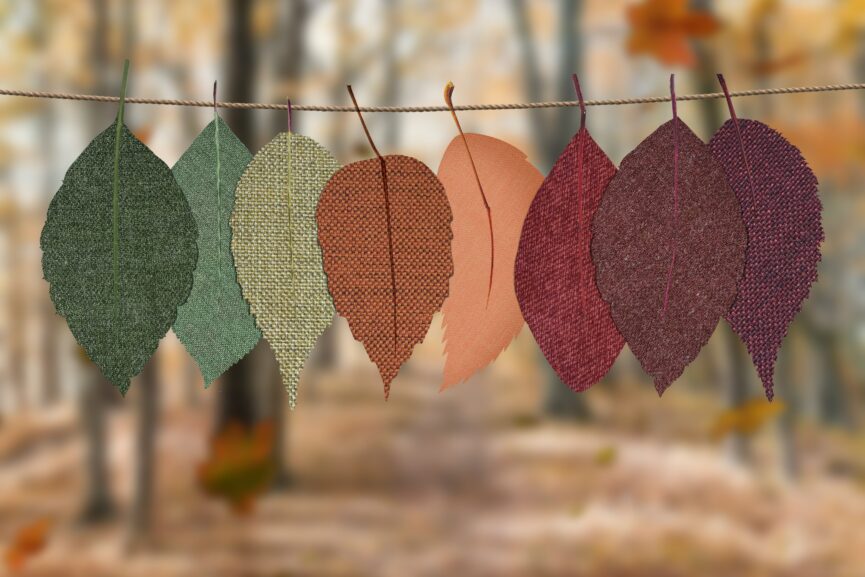At a recent Transition Bondi Guest Dinner, our speakers wove a number of threads together, arising from the topic of ‘A New Look at Fashion’.
It is a topic and an ‘issue’ that we are all connected to, and we were treated to a potted life story of how a woman began as a teenager and soon worked in the industry in a variety of jobs. Seeing the issues of waste, exploitation of workers and mass production led her away from that area of employment until now she has her own small business specialising in vintage clothing and creative design.
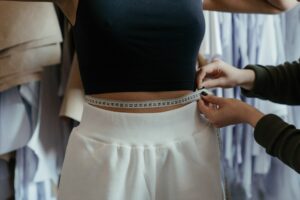
sewing a new garment; image from pexels-cottonbro-studio
The discussion that followed had us talking animatedly about the madness of fast fashion, the loss of skills in sewing and mending, the scarcity of good quality natural fabrics, and the damage to the environment of laundering ‘fluffy’ and napped clothing (eg velvets, polar fleece jackets): tiny pieces of plastic fibres flow from our washing machines into the ocean.
Shockingly we were told that taking your clothes to charity stores is mostly a lost cause as much of that clothing doesn’t get circulated – as we like to think – into the local economy.
Transportation (emissions from air fuel consumption) shifts discarded clothing around the world to no good end. And millions of people in the developing world work at picking and sorting items from giant rubbish dumps, dealing with the waste that rich countries create.
We also heard that when discarded fabrics are broken up into the constituent fibres for re-spinning, the process is very expensive.
The take-away message for us as individuals seems to be to stop demanding and consuming more clothing.
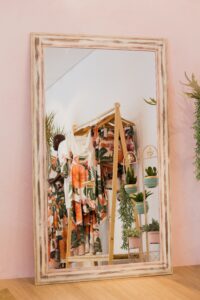
image from pexels-sid-maia
Reflections on ‘clothing’
Such a fruitful topic! We all have our favourite pieces of clothing (some from earlier in our lives)…nice stories to tell…
The way we dress and our tastes are so unique! So much of it is about signalling something about ourselves, wanting to be seen or thought of in a certain way – that is undefinable but combines aspects of wanting to conform, or to rebel, to be creative, to look a different age or size, to be cool.
A perspective from a veteran fashion worker is that fast fashion may appeal to our broken hearts; we buy for relief from our pain. Instead, we need to actually love each other more. Does shopping really offer a salve to loneliness?
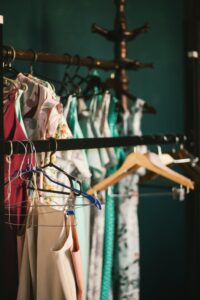
image from pexels-evg-kowalievska
Another driver behind fast fashion is the subtle message in all advertising – that we’re not good enough as we are so we need to improve ourselves, or we deserve or need more!!
Then there is the feeling we have when we ‘get rid’ of clothing or throw it out. It’s an attempt to shed aspects of ourselves that now feel old-fashioned or embarrassing in some way. And there’s something virtuous in throwing things away – removing them from our sight; clearing out, de-cluttering, becoming clean! And one can feel generous to ‘donate’ to a charity as it’s like doing a good deed!
My key requirement these days is comfort in size, shape. Then comes the feel on the skin (silk, linen, wool, cotton).
And I sometimes find myself standing almost in my wardrobe – communing with the things hanging and folded in there. So many stories and connections, with people, special occasions, times and places.
So changing our ways is a complicated thing, given all the threads that hang from Fashion! Dress! Clothing!
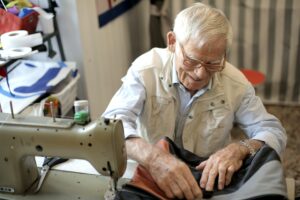
Mending: image from pexels-repairing clothes- andrea-piacquadio
A few ideas for action came out of our evening:
- Holding a clothes swap
- Starting a Library of Sewing Things at one of our homes
- Having a monthly repair session (a mini Repair Café) at someone’s home, with an experienced ‘sewer’ offering guidance and bringing a sewing machine.
Kit Shepherd, Convenor, Transition Bondi
November 2022
Feature image from ‘design ecologist’ via pexels
Further reading/listening:
For an inspiring solution check out Upcycle Newcastle

